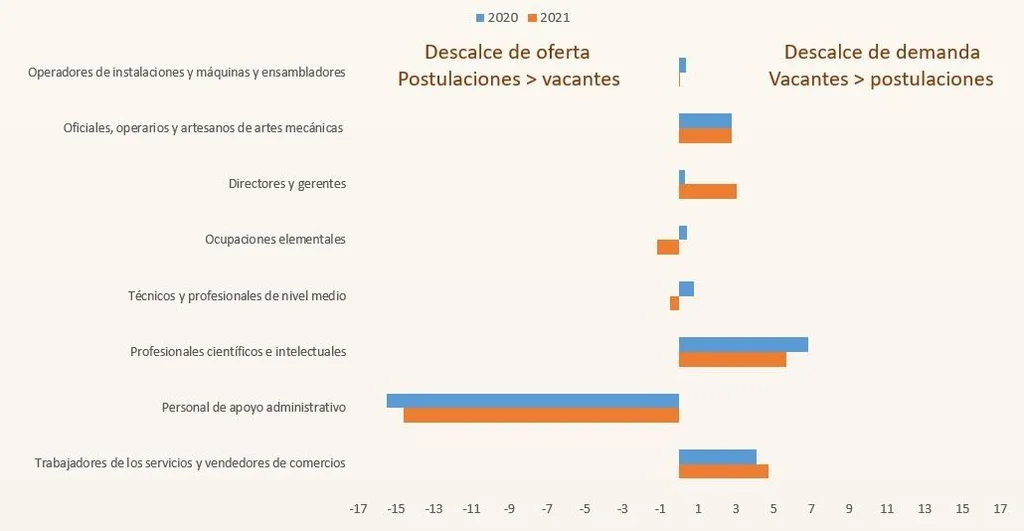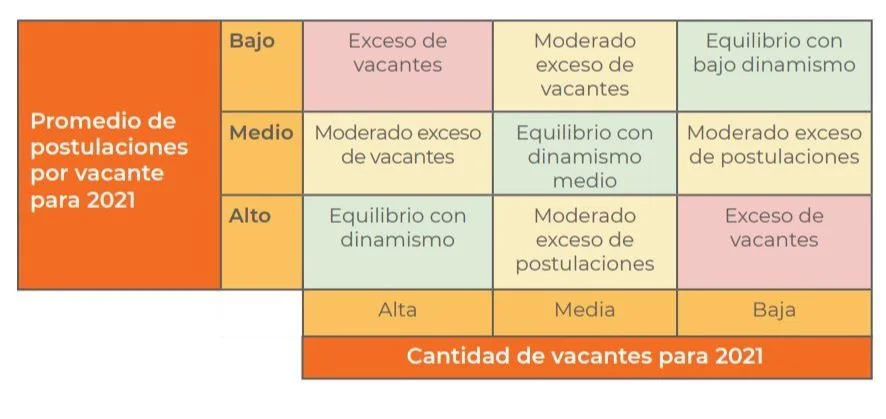A study of Center for Development Studies (CED) confirmed the recovery of activity and the level of employment in most occupations compared to pre-pandemic records but warned about the need to structural changes in the Uruguayan labor market and place emphasis on strengthening the education sector to “reconfigure the conflictive relationship between education and work”
This Tuesday the CED presented together with the job portal Buscojobs, the consulting firm Equipos and the Konrad Adenauer Stiftung (KAS) Foundation the first report Labor Monitor Mismatches between supply and demand in the Uruguayan labor market: a look from the occupations. The activity was attended by the Minister of Labor and Social Security, Pablo Mieres, the General Labor Inspector, Tomás Teijeiro and the National Director of Employment, Daniel Pérez. In turn, they showed Agustín Iturralde, Executive Director of the CED, Felipe Migues, associate researcher of the CED and Marcos Aguiar, director of Buscojobs and Consulting Teams.
The report notes, among other things, to design a framework for the analysis of imbalances in the Uruguayan labor market using information from the Buscojobs portal for the year 2021and offer a tool for identification of existing skills gaps.
According to Mieres, this type of instrument is “particular value” given that “It allows online monitoring of the evolution of the labor market, and also of something that is very relevant for making public policy decisions, which are the mismatches between the skills and abilities of people, and the requirements of a job market. work running at high speed“.
Augustine Dorce
Pablo Mieres, Agustín Iturralde and Felipe Migues exhibit on the 40th floor of the World Trade Center
The results of the report
The report explains that the framework for mismatch analysis is developed in three successive stages that incorporate elements to deepen and complement the analysis.
First of all it compare the relative weights of vacancies and applications for the large groups of occupations identified, according to him International Uniform Occupations Code (ISCO-08).
These groups are:
- Directors and managers
- Professionals, scientists and intellectuals
- Mid-level technicians and professionals
- Administrative support staff
- Service workers and shop and market vendors
- Farmers and skilled agricultural, forestry and fishing workers
- Officials, operators and craftsmen of mechanical arts and other trades
- Plant and assembly machine operators
- elementary occupations
In this sense, the results of the study suggest that there is an oversupply of skills in occupations associated with administrative support staffwhile the opposite case occurs in occupations of professionals, scientists and intellectuals and workers in services and commerce, in which an excess of vacancies or demand for skills is observed.

Center for Development Studies (CED)
Secondly, a ranking of vacancies and applications by occupation is drawn up to compare the positions you occupy in each one and draw up a first map of mismatches.

Center for Development Studies (CED)
There it is confirmed mismatch due to excess demand in occupations associated with information technology (ICT), science and engineering that generate a significant number of vacancies but register a relatively smaller number of applications.
In the zone of dynamic balance (high level of vacancies and applications) occupations are located linked to business administration, finance, administrative support and customer service.

Center for Development Studies (CED)
Thirdly, in analysis it incorporates the variable suitability of the candidate for the vacancy for which he is applying with an adjustment index between the two, which allows deepening and complementing the previous analyses.
In this sense, the results identify mismatches especially relevant to a set of skills related to science, technology, engineering and mathematics or STEM, in which the main mismatches are observed in the candidate’s experience and language skills. The occupations of web development and programming, engineering and industrial design, electronics and electromechanics show the worst suitability levels.
On the other hand, occupations linked to sales and customer service show the best levels of adjustment between demand and supply, in which the job market seems to work relatively easily to find suitable candidates. In a The intermediate zone includes occupations related to business sciences, finance and accounting.
The report highlights that these imbalances are at the base of several of the structural problems of the Uruguayan labor market: youth unemployment, low productivity and difficulty in the reintegration of people over 45 or people whose jobs are threatened by technological advances.
In this sense, consider that Identifying and dimensioning these adjustments is a fundamental first step for the development of relevant labor and educational public policy to address these problems.but it is also information essential for training centers to review their educational proposals and reconfigure the conflictive relationship between education and work.
In addition, knowing these mismatches is valuable information at the individual level to link with the labor market and address the challenge of lifelong learning.
Here You can access the full CED report.
















